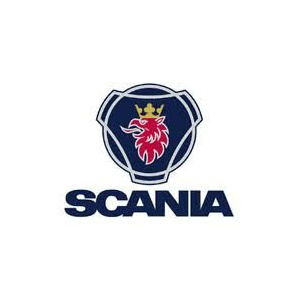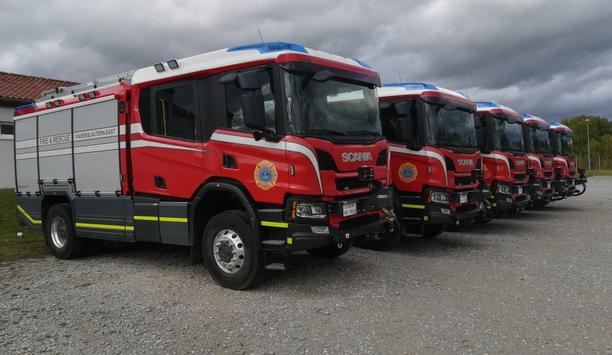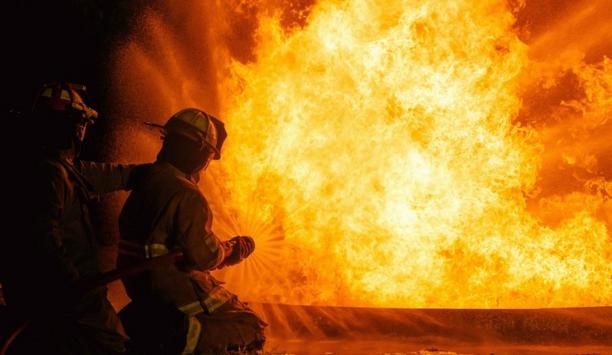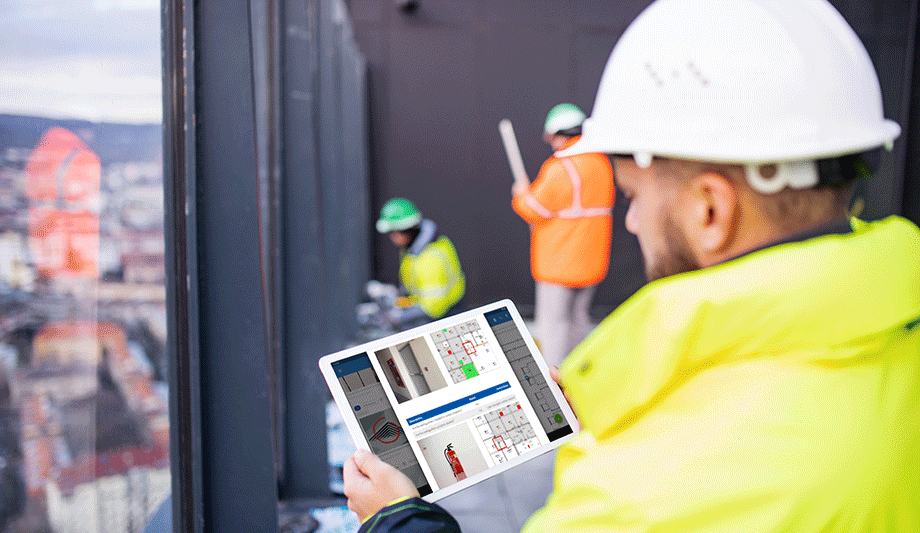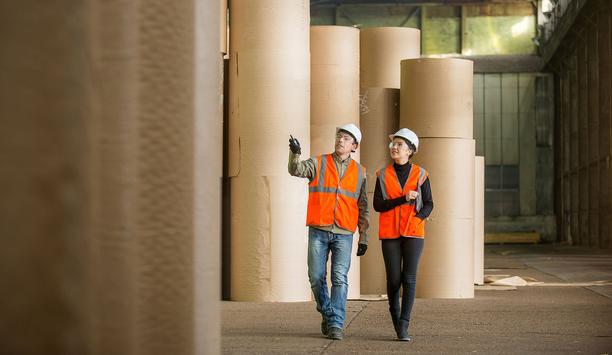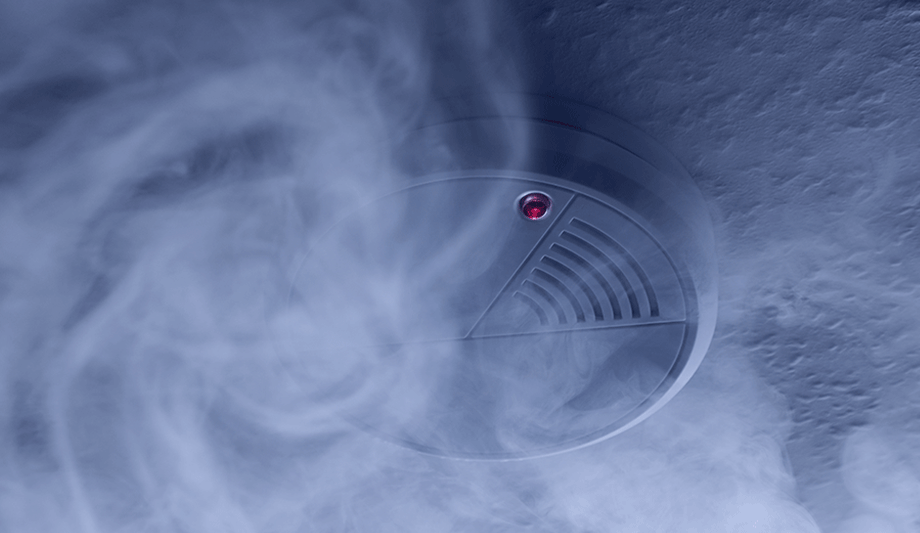Scania AB - Experts & Thought Leaders
Latest Scania AB news & announcements
With the B34 2.0, Rosenbauer presents the next generation of its standard aerial rescue platform. It has been revised in major parts and equipped with new, weight-optimized components. Weight could be saved with both the aerial rescue set and the rescue cage without sacrificing robustness and rigidity. A newly developed telescope ensures that the arm set can be extended further than with a B32 and that a rescue height of 34 meters can be reached with the basket attached. High-strength steels bring the required strength and robustness into the telescope, the proven Rosenbauer horizontal-vertical support with stepless support width detection guarantees a secure stand in every situation. The B34 becomes a fully-fledged fire-fighting device thanks to the rescue ladder attached to the aerial rescue kit. A major advantage of the weight optimization is that the B34 does not require a three-axle chassis, but can be built on a two-axle vehicle with a gross vehicle weight of 18 t. fire fighting equipment This also applies to the generally somewhat heavier Scania chassis and is a unique selling point on the market. The vehicle has an HLM safety platform with two spacious equipment compartments on each side of the vehicle and is fully equipped with LED technology (lighting on the deck, surrounding area, access and equipment compartment lighting, headlights and speed cameras). A special highlight is the newly redesigned rescue cage. The basket load is 500 kg with extensive equipment. One can also equip it with a pump and tank themselves and expand it into a first-time use, i.e. first-attack device The rescue cage of the B34 is prepared for the various application scenarios in just a few simple steps, all the adapters and attachments required are stored in the vehicle. By opening the front cage, front one can get into the rescue cage without barriers. The B34 2.0 also has basic fire fighting equipment consisting of a feed in the rear of the vehicle, a telescopic water riser (TWS) and a turret on the front of the cage. Numerous automatic functions Its extinguishing performance has been increased to 3,800 l / min, which is almost 30 percent more than was previously possible. The B34 is therefore always ready for an extinguishing attack from a height and only needs to be connected to the pump of a fire truck. One can also equip it with a pump and tank themselves and expand it into a first-time use, i.e. first-attack device. Numerous automatic functions facilitate the operation of the device, every movement is monitored, every force that acts on the aerial rescue set or the people in the basket is permanently determined and used to release the greatest possible radius of action. Operators can see immediately whether the work area is restricted in a certain direction, whether the cage has reached the limit of its load-bearing capacity or the ground pressure of the supports is no longer sufficient for safe operation. high-performance hydraulics The high-performance hydraulics ensure fast movement and set-up times The user has their device fully under control in every phase of an operation, regardless of whether they operate it from the main control station on the vehicle or from the basket at a height of 34 m. The high-performance hydraulics ensure fast movement and set-up times. The new B34 2.0 complements the Rosenbauer stage range in the standard height range and is offered in addition to the well-established B32. The technical requirement that they have to meet is the same for both of them, namely to ensure maximum safety and performance at high altitude. Aerial rescue platform B34 2.0 (according to EN 1777 or NFPA 1901) Chassis: MB Econic 1830L Engine output: 220 kW (299 PS) Support: horizontal-vertical (5.93 m) Podium: HLM podium with new safety functions Lifting rescue kit: 3-part main arm + one-part, tiltable cage arm Working / rescue height : 34 m Max. lateral projection: 25 mRescue cage: 500 kg Alternative escape route: via attached ladder along the telescope Preparation for extinguishing: Telescopic watervriser (TWS) to the cage - Electrical supply: Power riser (24 V, 230 V, 400 V) to the cage - Crane function: Lifting eye on the lower ladder with 2 t lifting capacity - automatic return to the ladder tray Target memory system (TMS) Full LED equipment Dimensions: 9.15 x 2.55 x 3.20 m Permissible total weight: 18 t
The U.S. Army in Germany recently added eight Scania structural pumper P410 B4x4HZ trucks with Rosenbauer-body and Allison 4000 Series™ fully automatic transmissions to its fire fleet. The vehicles, featuring the new CP 31 Crew Cab, are powered by a 302 kW (410 hp) diesel engine combined with an Allison 4000 Series™ fully automatic transmission. They will be stationed at different locations across Germany. The U.S. Army has procured this vehicle configuration for the last 10 years, partly because of the advantages of a standardized fleet for staff training and vehicle maintenance, but also due to its positive experience with Allison transmissions over the past three decades. Operate water pump via the Power Take-Off “So far, the transmissions have fulfilled all requirements of the U.S. Army with regards to performance, operation and maintenance,” said Sigurd Mack, Fire Protection Specialist at the U.S. Army Installation Management Command’s European Headquarters in Sembach near Kaiserslautern. “This also applies to the integrated hydraulic retarder and the Power Take-Off with the pump and roll function. It enables us to maneuver the vehicle safely and, at the same time, operate the water pump via the Power Take-Off - which is indispensable for efficient firefighting. For our operations and emergency responses good acceleration, easy handling and robustness are essential.” According to the American NFPA (National Fire Protection Association) 1901 (Standard for Fire Apparatus) directive for firefighting vehicles, fully automatic transmissions are mandatory for heavy firefighting vehicles. In its solicitation, the U.S. Army does not only specify fully automatic transmissions, it also identifies bespoke emergency vehicle transmission software. “A fully automatic transmission will only properly benefit the driver during operation if the shift pattern is tuned to the vehicle and the transmission works together effectively with the driver. It has to meet the specific mission for emergency response,” said Mack. Improved acceleration and higher average speed Allison fully automatic transmissions differ from other technologies. Among other factors, they have specially developed shift calibration programs for the fire and rescue application. When combined with continuous powershifting, this results in improved acceleration, higher average speed and faster response times. The transmissions shift smoothly at precisely the right moment, allowing the driver to concentrate fully" The fully automatic Allison transmission with its patented torque converter and Continuous Power Technology™ multiplies engine torque during vehicle start-up and acceleration. Gear changes are made without interruption, resulting in the smooth transfer of power to the drive wheels and maximum efficiency between engine and transmission. “The transmissions shift smoothly at precisely the right moment, allowing the driver to concentrate fully on the road, which contributes significantly to accident prevention,” said Mack. “In addition, to have competent and highly skilled service technicians, as well as spare parts service locally available greatly limits down time and contributes to our readiness,” said Mack. “The transmission manufacturer infrastructure has also supported our goals so far in this regard.” Reliability and durability in extremely difficult conditions The oldest Allison transmissions in the fire brigade of the U.S. Army in Germany have clocked up over 30 years of service Allison fully automatic transmissions have demonstrated their outstanding reliability and durability under extremely difficult conditions and are consequently used by numerous fire brigade fleets worldwide. There are currently about 70 Allison fully automated vehicles in the fire truck fleet of the U.S. Army in Germany. The oldest Allison transmissions in the fire brigade of the U.S. Army in Germany have clocked up over 30 years of service. In 2007, the drivetrain components from 12 older Amertek 2500L trucks were removed and installed into 12 overhauled firefighting trucks, so called “glider kits.” The Detroit diesel engines and Allison HT 750 DRD transmissions of the Amertek 2500L trucks, which at that time were already around 25 years old, were fitted to a new HME 1871 SFO chassis with a body made by Hensel. Glider kits used for multi-purpose vehicles for firefighting “In the USA, general vehicle overhaul is a recognized procedure for vehicle maintenance and service life extension. The engines and transmissions, especially in fire trucks, are still in relatively good working condition and have proven to be very reliable, even after a long period of time. This contributed to the decision for a service life extension,” said Mack. Compared to a new purchase, the “glider kits” helped to save approx. 80,000 - 100,000 USD per vehicle without compromising the functionality. The “glider kits” are used as multi-purpose vehicles for firefighting and for providing technical assistance.
At INTERSCHUTZ 2020, Scania is set to wow the crowds with the P-series CrewCab - a solution packed with innovations designed to make sure emergency responders arrive on the scene safely, securely and ready to go. Scania, which is based in Södertälje, Sweden, and is a wholly owned subsidiary of Volkswagen AG, is one of the biggest and most profitable manufacturers of commercial vehicles in Europe and South America. Its wide range of specialist vehicles includes fire trucks and ambulances based around Scania systems. To ensure emergency responders don't just reach the scene of an incident quickly and reliably, but can also travel there in comfort and safety, the Swedes have scrutinized every last detail of the cab concept. The results of their efforts are now to go on show to the public at the open-air site of INTERSCHUTZ 2020 in Hannover. climate control system Among the new additions are the Scania City Safe Window and a separate climate control system According to the manufacturer, the new Scania P-series CrewCab is full of new features that have been specifically tailored to the needs of emergency services. Ergonomics and safety were top priorities for the CrewCab’s developers, but that doesn’t mean they were willing to compromise on quality in any way. Among the new additions are the Scania City Safe Window and a separate climate control system for the crew area. This system sits behind the driver and features air vents that direct warm air towards the floor and to the side windows. well-being of crew members "As is appropriate for a vehicle intended for use by emergency services, the safety and well-being of crew members was a primary aspect in the development of the new Scania CrewCab," says Louise Johansson, Product Manager at Scania, commenting on these latest extras. The cab can carry up to eight rescue workers, and the flexible interior layout and excellent lighting features help the crew to get ready for any emergency mission. With gear stowed in the right place and easily accessible, they can focus entirely on planning the mission at hand.
The New Future For Fire Agencies
DownloadThe Eight Key Trends in Fire Detection in 2023
DownloadA Digital Platform to Improve Fire Safety Compliance and Inspections
DownloadOvercoming the Challenges of Fire Safety in the Paper Industry
DownloadCarbon Monoxide: Creeping Killer Caught In The Act
Download